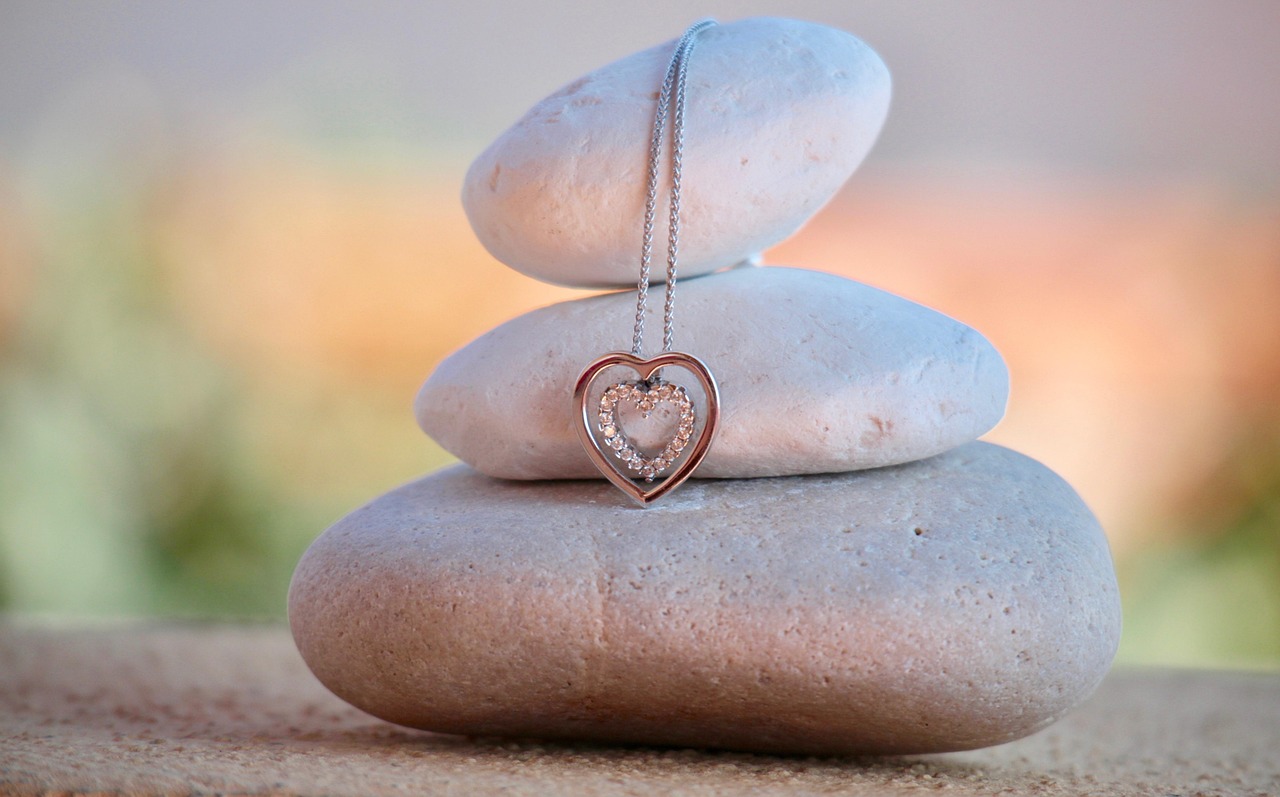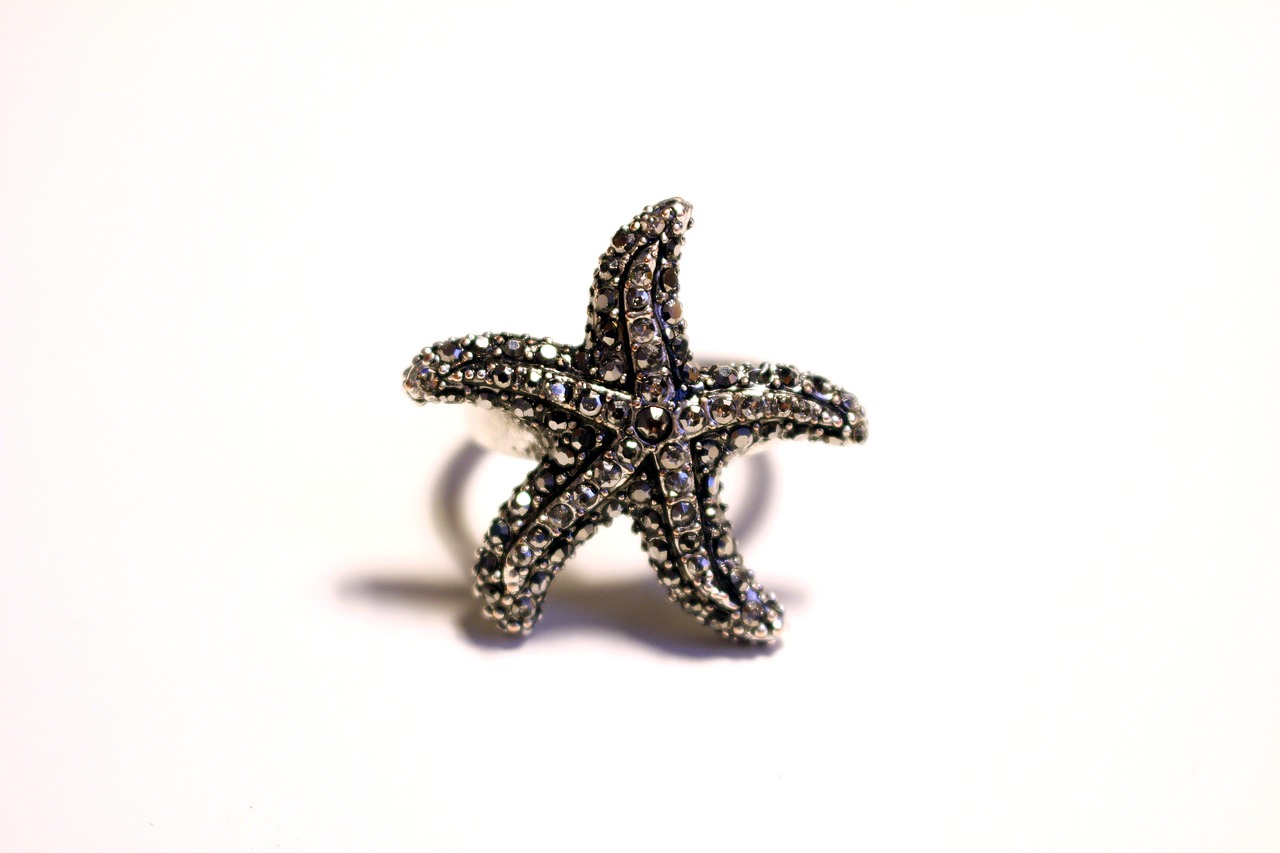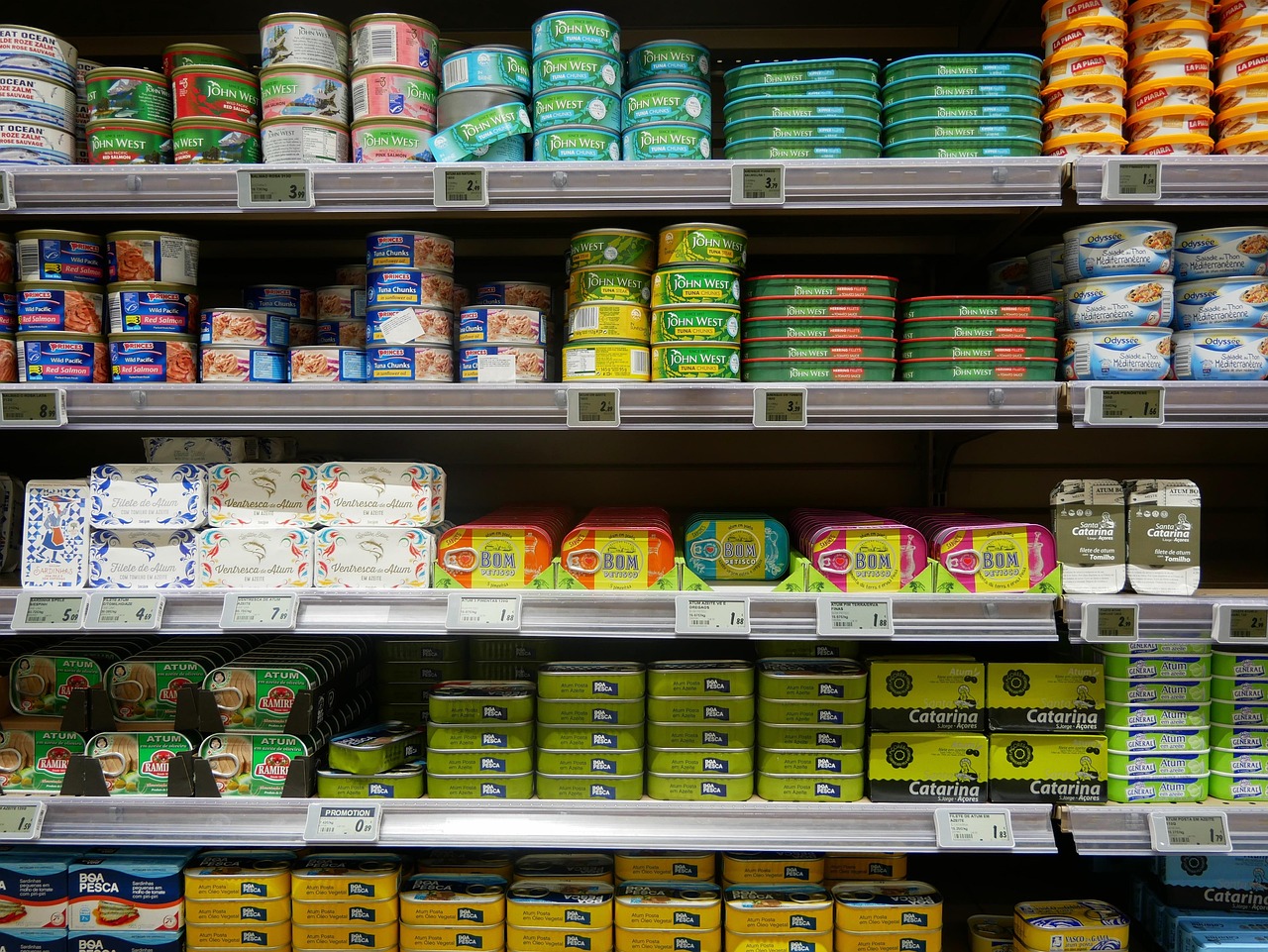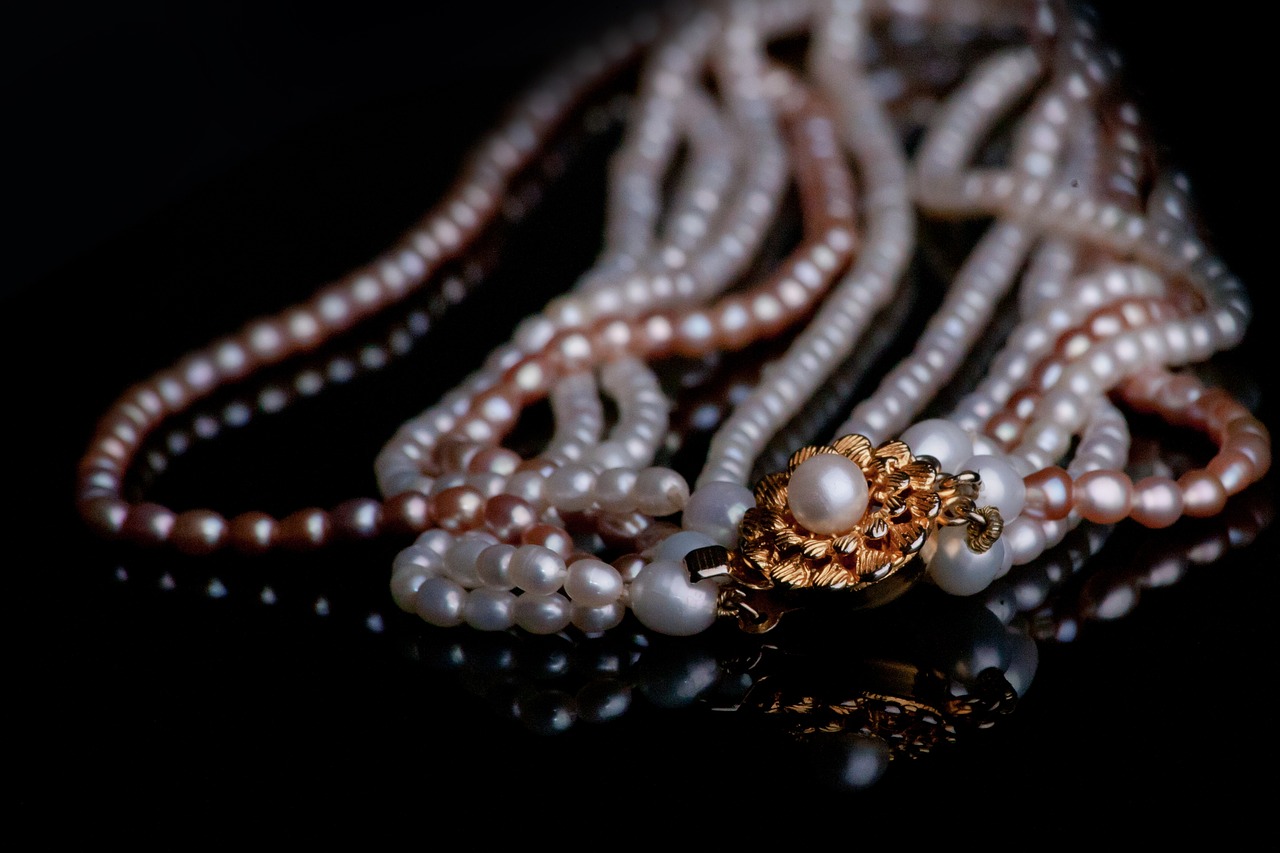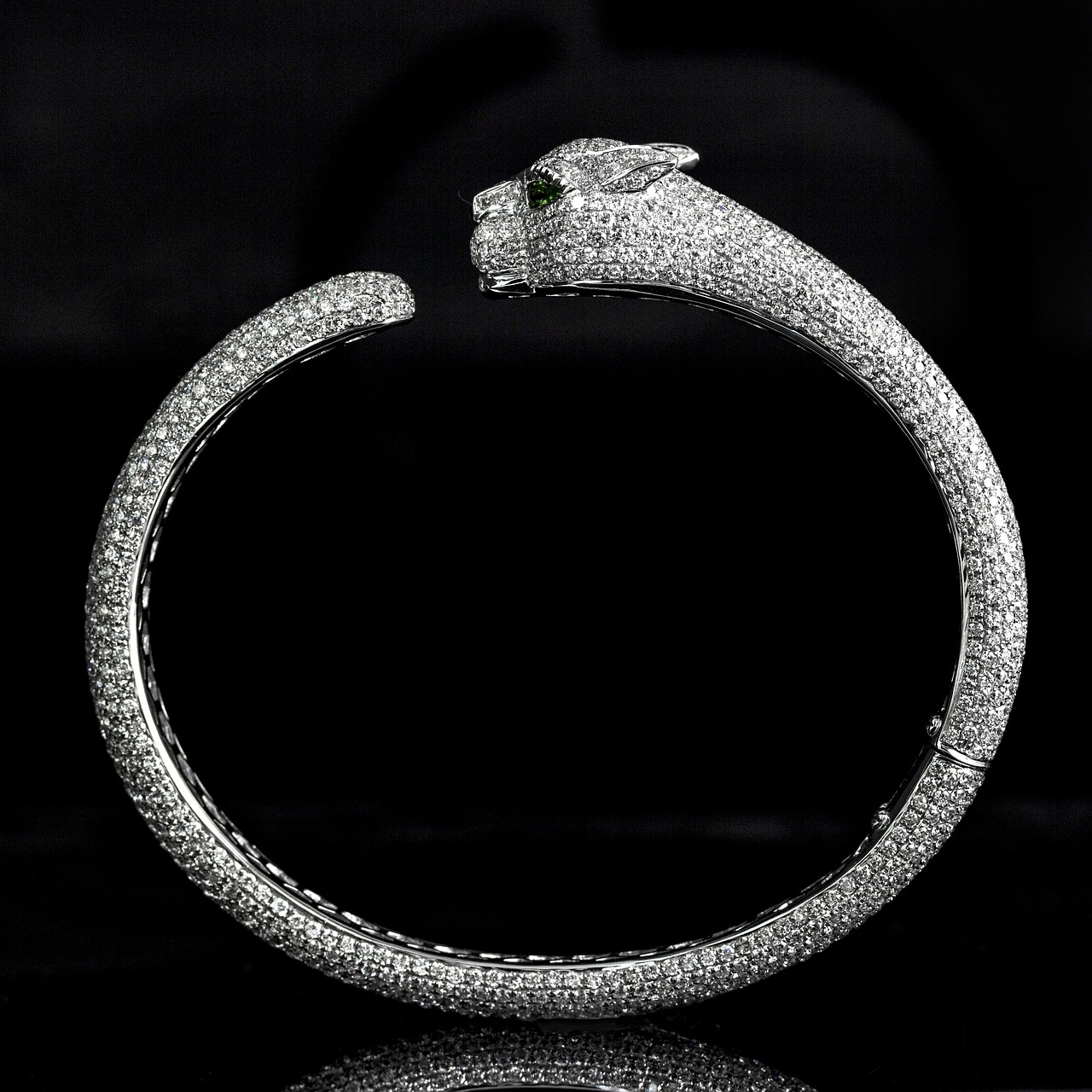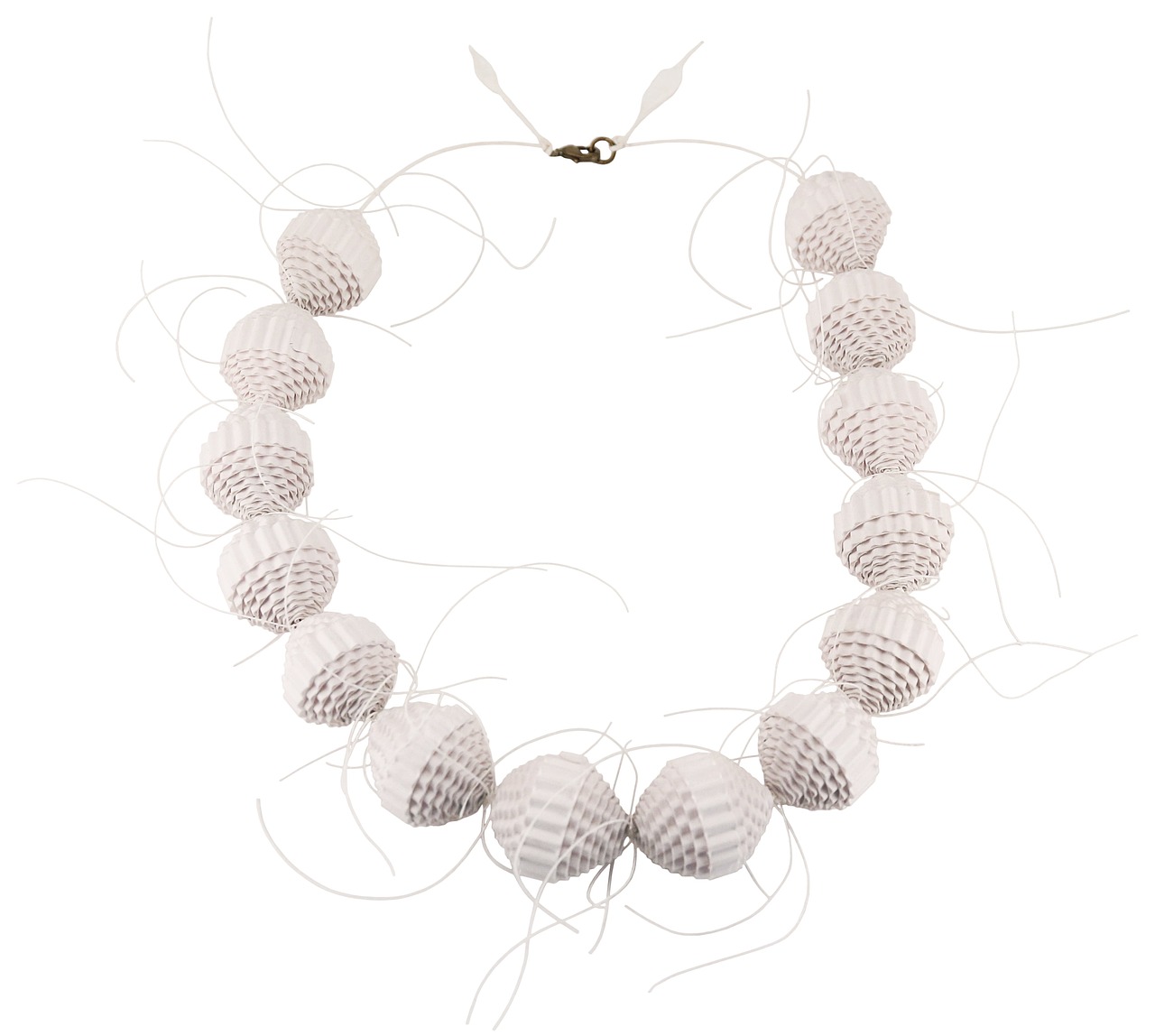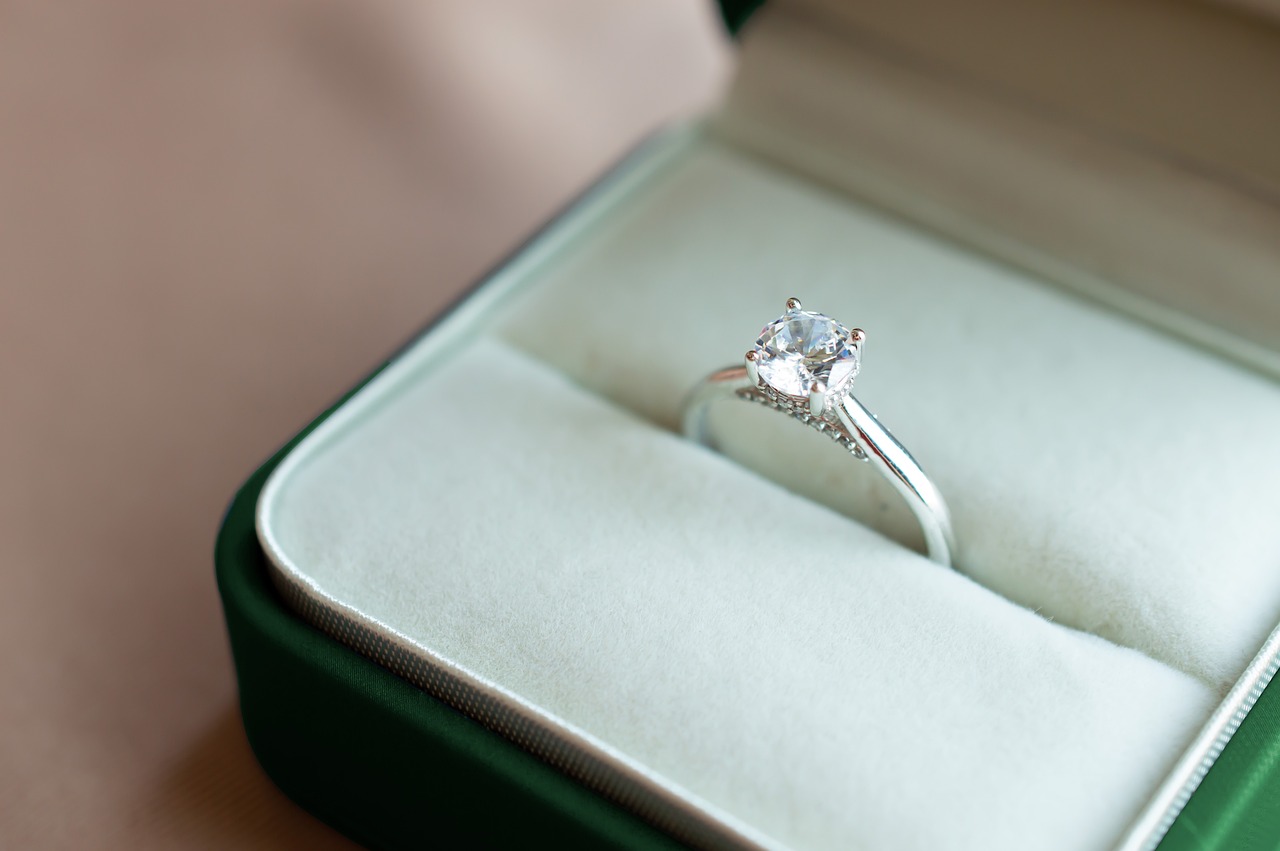Vintage jewelry trends have made a remarkable comeback, captivating fashion enthusiasts and collectors alike. The unique charm and appeal of these pieces stem from their rich history and intricate craftsmanship. In this article, we will explore the reasons behind the resurgence of vintage jewelry, delve into various styles, and provide practical tips on how to incorporate these timeless treasures into modern fashion.
The allure of vintage jewelry lies in its storytelling and the artistry involved in its creation. Many modern consumers are drawn to these pieces as they often reflect personal style and a commitment to sustainability. Vintage jewelry allows individuals to express their uniqueness while also embracing a more environmentally conscious approach to fashion. By choosing vintage, one reduces the demand for newly mined materials, thereby contributing to a more sustainable future.
When exploring vintage jewelry, it’s essential to understand the various styles that define this fascinating category. Here are some key styles:
- Art Deco: Characterized by bold geometric designs and luxurious materials, Art Deco jewelry is a favorite among collectors.
- Victorian: Rich in symbolism, Victorian jewelry often features sentimental motifs and intricate designs.
- Edwardian: Known for its delicate filigree work, Edwardian jewelry embodies elegance and sophistication.
Integrating vintage jewelry into your wardrobe can elevate your style and create a chic look. Here are some practical tips:
- Layering Vintage with Modern Pieces: Mixing vintage and contemporary jewelry can create a unique and personalized style. Try layering a vintage necklace with modern pieces for a balanced look.
- Choosing the Right Occasion: Vintage jewelry can enhance your outfit for various occasions, from casual outings to formal events. Consider the event’s theme when selecting your jewelry.
Proper care is crucial for preserving the beauty of vintage jewelry. Here are some effective tips:
- Cleaning Vintage Jewelry Safely: Use gentle cleaning methods to avoid damage. A soft cloth and mild soap can work wonders for most pieces.
- Storage Solutions: Store vintage jewelry in a cool, dry place, ideally in a fabric-lined box to prevent tarnishing and scratches.
Finding authentic vintage jewelry can be an exciting treasure hunt. Consider exploring:
- Online Marketplaces: Websites like Etsy and eBay offer a vast selection of vintage pieces. Always check seller reviews and authenticity guarantees.
- Estate Sales: Estate sales can be gold mines for vintage jewelry. Look for signs of authenticity and be prepared to negotiate prices.
Opting for vintage jewelry is not just a style choice; it’s also an environmentally conscious decision. By choosing vintage, you help:
- Reduce Demand for New Resources: Supporting vintage markets decreases the need for newly mined materials, promoting sustainability.
- Support Local Artisans: Purchasing vintage often means supporting local artisans and small businesses, contributing to local economies and craftsmanship.
In conclusion, vintage jewelry offers a unique blend of history, artistry, and sustainability. As trends continue to evolve, incorporating vintage pieces into modern fashion not only enhances personal style but also supports environmentally friendly practices.
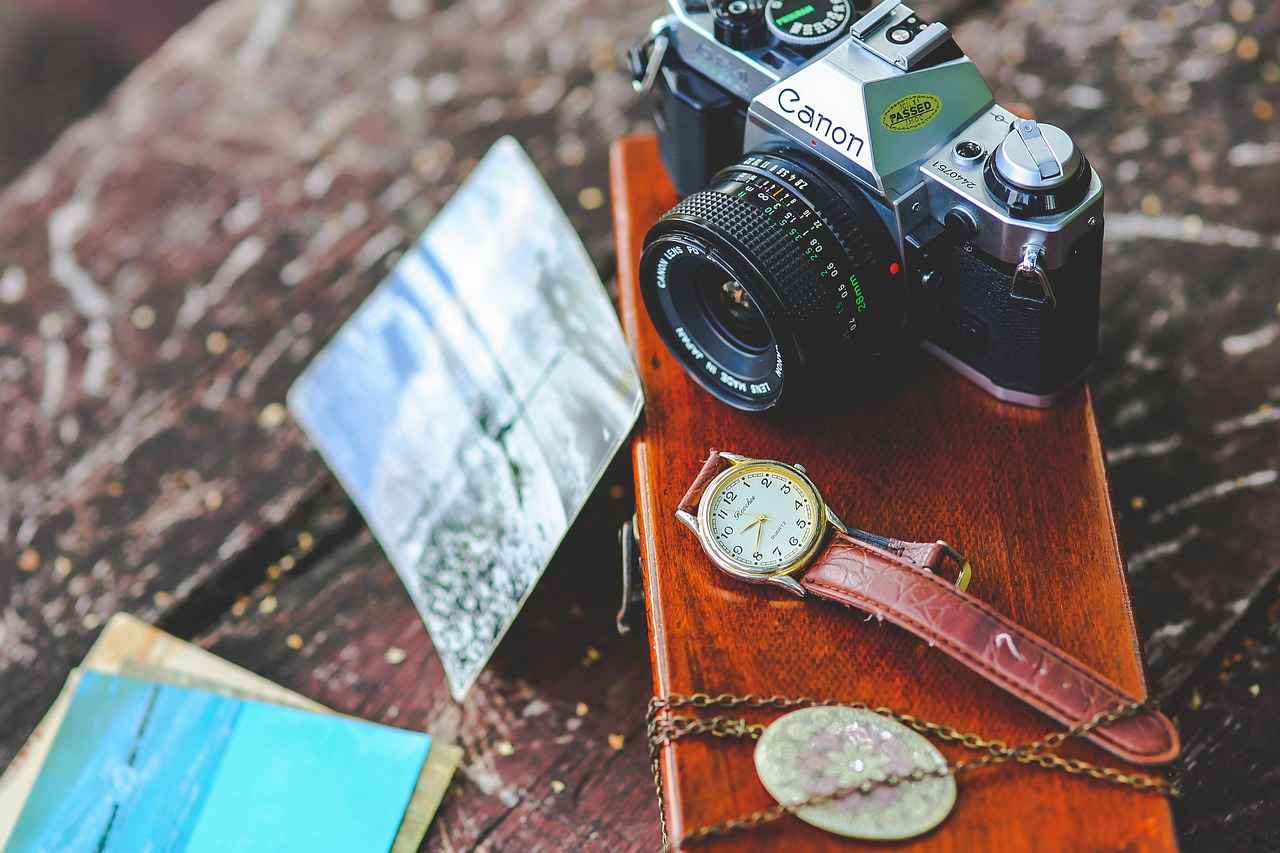
Why is Vintage Jewelry So Popular Today?
The world of fashion is ever-evolving, yet one trend continues to capture the hearts of many: vintage jewelry. Its popularity today can be attributed to a variety of factors, making these timeless pieces more desirable than ever. Let’s explore the reasons behind this enduring fascination.
The allure of vintage jewelry lies not only in its rich history but also in the exceptional craftsmanship that often accompanies these pieces. Each item tells a story, reflecting the era it comes from, the artisans who created it, and the cultural influences of the time. This connection to the past creates a sense of nostalgia that resonates with modern consumers.
In an age dominated by mass production, vintage jewelry offers a unique way for individuals to express their personal style. Many consumers are drawn to the distinctive designs that set vintage pieces apart from contemporary jewelry. Whether it’s the intricate details of Victorian pieces or the bold geometries of Art Deco, these items allow wearers to showcase their individuality.
As sustainability becomes a pressing concern for many, vintage jewelry stands out as an eco-friendly option. By choosing pre-owned pieces, consumers help reduce the demand for newly mined materials, which often come with significant environmental costs. This conscious choice aligns with a growing trend towards sustainable fashion, making vintage jewelry not just a style statement but also a responsible one.
From the ornate designs of the Edwardian era to the sleek lines of Mid-Century Modern, each vintage style has its own unique characteristics. Understanding these can help buyers identify pieces that resonate with their taste. For instance, Art Nouveau is known for its flowing lines and natural motifs, while Retro jewelry features bold colors and playful designs.
Finding authentic vintage jewelry can be an exciting treasure hunt. Reputable sources include antique shops, estate sales, and online platforms such as Etsy and 1stDibs. When shopping, it’s essential to verify the authenticity of pieces and understand their provenance to ensure you are investing in genuine items.
Proper care is crucial for maintaining the beauty and integrity of vintage jewelry. It’s recommended to store pieces in a cool, dry place, away from direct sunlight. Regular cleaning should be done gently, using soft cloths and appropriate cleaners to avoid damaging delicate materials.
In conclusion, the popularity of vintage jewelry today can be attributed to its historical significance, unique craftsmanship, and alignment with sustainable practices. As consumers continue to seek out ways to express their individuality while making responsible choices, vintage jewelry is likely to remain a cherished part of the fashion landscape.
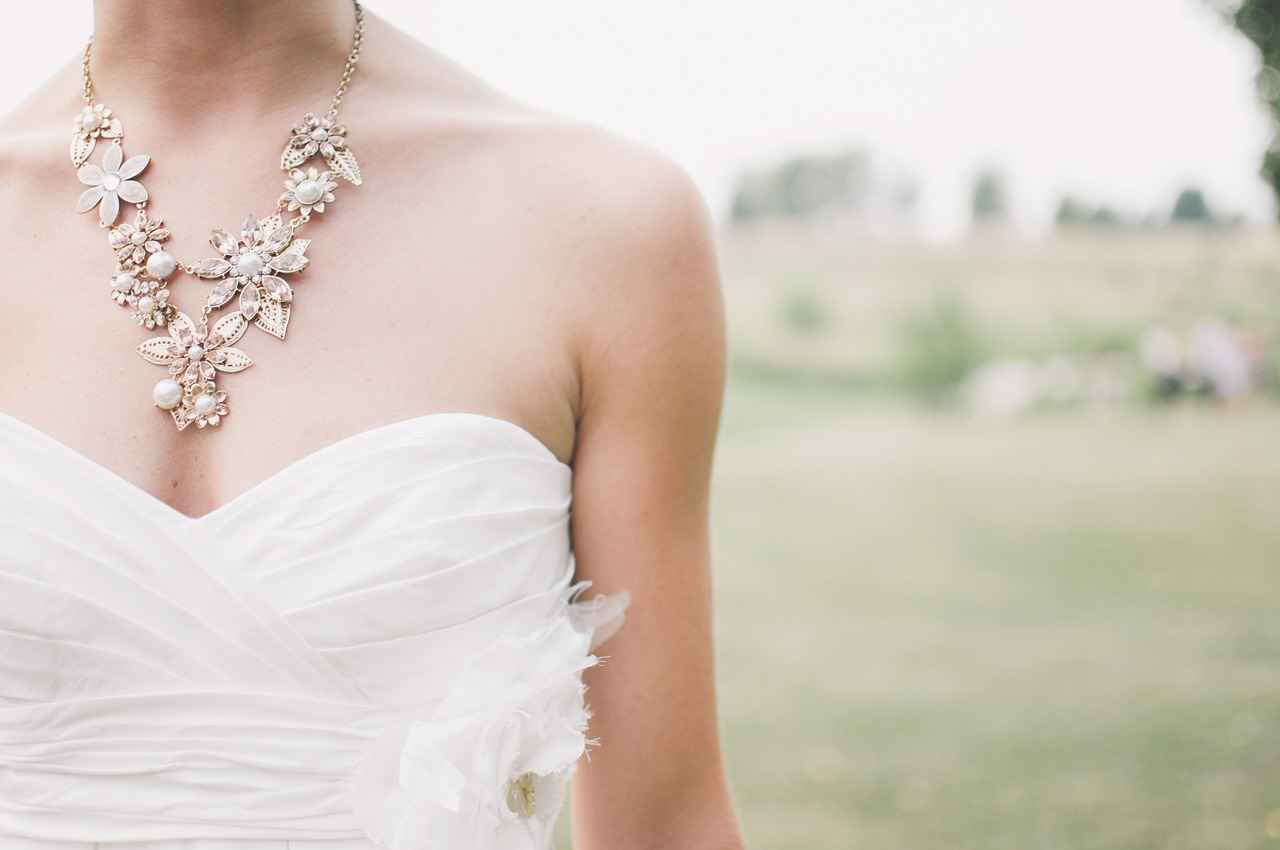
Key Vintage Jewelry Styles to Look For
Vintage jewelry is a fascinating realm where history meets artistry, offering a glimpse into different eras through its unique designs and materials. Understanding the key styles of vintage jewelry can significantly enhance your ability to identify authentic pieces that resonate with your personal taste. Below, we explore some of the most notable vintage jewelry styles, their characteristics, and tips for recognizing genuine items.
- Art Deco: The Epitome of Glamour
Emerging in the 1920s, Art Deco jewelry is characterized by its bold geometric shapes and lavish materials. Look for pieces that feature platinum, diamonds, and vibrant gemstones. The intricate designs often include motifs inspired by the Roaring Twenties, such as zigzags and chevrons. Authentic Art Deco pieces are often marked with designer signatures, making them more valuable.
- Victorian: A Touch of Sentimentality
The Victorian era, spanning from 1837 to 1901, is known for its sentimental jewelry that often features lockets, cameos, and intricate engravings. Common materials include gold and silver, adorned with precious stones like garnets and pearls. Look for pieces that tell a story, as many Victorian items were given as gifts to symbolize love or friendship.
- Edwardian: Elegance and Intricacy
Following the Victorian period, Edwardian jewelry (1901-1910) is known for its delicate lace-like designs and the use of platinum. This era favored filigree work and diamond embellishments, creating a sense of lightness. Authentic Edwardian pieces often feature intricate details that can be appreciated up close.
- Retro: Bold and Playful
Retro jewelry, popular from the 1940s to the 1960s, is characterized by bold designs and vibrant colors. Pieces often incorporate gold in various hues and feature large, colorful gemstones. Look for unique shapes and oversized designs that embody the playful spirit of the era. Retro jewelry is often less delicate than its predecessors, making it more durable.
- Mid-Century Modern: Simplicity Meets Style
Mid-century modern jewelry (1940s-1960s) emphasizes clean lines and simple designs. Often made from sterling silver and enamel, this style reflects the minimalist aesthetic of the time. Look for pieces that are both functional and artistic, often featuring abstract shapes that are easily recognizable.
When searching for vintage jewelry, it’s essential to familiarize yourself with these styles and their unique characteristics. Not only will this knowledge enhance your appreciation for the artistry involved, but it will also empower you to make informed purchases. Whether you are a seasoned collector or a newcomer to the world of vintage jewelry, understanding these key styles will guide you in finding pieces that truly resonate with your personal aesthetic.
As you explore various vintage jewelry options, remember to consider the authenticity and craftsmanship of each piece. Look for signs of wear that indicate age, and always verify the materials used to ensure you are investing in genuine vintage items. By doing so, you can build a stunning collection that not only reflects your style but also carries the rich history of the eras it represents.
Art Deco: Luxury and Geometry
Art Deco jewelry stands as a testament to a transformative era in design, characterized by its luxurious materials and striking geometric patterns. Emerging in the 1920s, this style reflects the optimism and innovation of the post-World War I period, making it a beloved choice for collectors and fashion enthusiasts alike.
The defining features of Art Deco jewelry include its emphasis on symmetry, bold lines, and vibrant colors. Unlike the intricate designs of the preceding Victorian era, Art Deco embraces a more streamlined aesthetic. This style often incorporates geometric shapes such as triangles, circles, and zigzags, creating visually stunning pieces that stand out.
- Timeless Appeal: The elegance and sophistication of Art Deco jewelry make it a timeless choice.
- Investment Value: Many pieces have appreciated significantly in value, making them attractive to collectors.
- Versatility: Art Deco jewelry can be worn with various styles, from casual to formal, enhancing any outfit.
Art Deco pieces often feature platinum, diamonds, and an array of colorful gemstones such as emeralds, sapphires, and rubies. The use of these luxurious materials not only adds to the aesthetic appeal but also enhances the overall value of the jewelry. The combination of high-quality craftsmanship and exquisite materials is what sets Art Deco jewelry apart from other styles.
Renowned designers like Cartier and Van Cleef & Arpels played pivotal roles in shaping the Art Deco era. Their innovative designs and commitment to quality have left a lasting legacy in the world of jewelry. These designers were known for their unique interpretations of the Art Deco style, often incorporating cultural influences from around the world.
Identifying authentic Art Deco jewelry requires a keen eye for detail. Look for hallmark stamps, which indicate the maker and materials used. Additionally, examine the craftsmanship; genuine Art Deco pieces will exhibit precision and expertise in their construction. Consider consulting with a reputable jeweler or appraiser if you’re unsure about a piece’s authenticity.
Integrating Art Deco jewelry into your wardrobe can elevate your style. Whether you choose a statement necklace or a pair of elegant earrings, these pieces can complement contemporary outfits beautifully. Consider layering Art Deco pieces with modern jewelry to create a unique look that showcases both styles.
Proper care is essential for preserving the beauty of your Art Deco jewelry. Store pieces in a soft cloth or padded box to prevent scratches. When cleaning, use a soft cloth and avoid harsh chemicals that can damage the materials. Regular maintenance will ensure your jewelry remains in excellent condition for years to come.
Finding authentic Art Deco jewelry can be an exciting adventure. Look for reputable antique shops, estate sales, and online marketplaces specializing in vintage items. Always do your research and ask for provenance to ensure the authenticity of the pieces you are considering.
In conclusion, Art Deco jewelry embodies a unique blend of luxury and geometric elegance that continues to captivate collectors and fashion enthusiasts. Its rich history, coupled with its timeless appeal, makes it a cherished addition to any jewelry collection.
Materials Used in Art Deco Jewelry
Art Deco jewelry is celebrated not only for its striking designs but also for the luxurious materials that define its aesthetic. This era, which flourished from the 1920s to the 1940s, embraced innovation and opulence, leading to the incorporation of various high-end materials. Understanding these materials is essential for appreciating the value and beauty of Art Deco pieces.
Platinum: The Metal of Choice
Platinum is a hallmark of Art Deco jewelry, prized for its durability and luster. Unlike gold, platinum does not tarnish, making it an ideal choice for intricate designs that require longevity. Its weight and density also allow for secure settings for precious stones, ensuring that diamonds and gemstones remain firmly in place. This metal’s rarity adds to the overall value of Art Deco pieces, making them highly sought after by collectors.
Diamonds: The Ultimate Gemstone
Diamonds are synonymous with luxury and elegance, and during the Art Deco period, they were often used in innovative ways. Jewelers employed brilliant cuts that maximized sparkle and light reflection, contributing to the geometric motifs characteristic of this style. The use of white diamonds was prevalent, but colored diamonds also gained popularity, showcasing a range of hues that complemented the vibrant designs of the era.
Colorful Gemstones: A Splash of Vibrancy
Art Deco jewelry is renowned for its use of colorful gemstones, including emeralds, sapphires, and rubies. These stones were often cut into bold, geometric shapes, enhancing the overall design. The contrast between the vibrant colors of these gemstones and the cool tones of platinum or white diamonds created striking visual effects. Additionally, the incorporation of semi-precious stones like jade and onyx further enriched the palette, allowing for unique and personalized pieces.
Enamel and Other Materials
In addition to metals and gemstones, enamel work became a defining characteristic of Art Deco jewelry. Colored enamel was often used to fill in geometric patterns, providing an additional layer of color and texture. This technique allowed jewelers to create intricate designs that were both modern and timeless. Other materials, such as glass and ivory, were also utilized, showcasing the creativity and innovation of the era. The combination of these materials not only enhanced the aesthetic appeal but also contributed to the uniqueness of each piece.
Why Materials Matter
The materials used in Art Deco jewelry are not just about luxury; they also play a crucial role in determining the value and authenticity of pieces. Collectors and enthusiasts often look for specific materials as indicators of quality and craftsmanship. Understanding the significance of these materials can help buyers make informed decisions when purchasing vintage jewelry. Moreover, the longevity and durability of materials like platinum ensure that these pieces can be cherished for generations, making them a worthwhile investment.
In conclusion, the materials used in Art Deco jewelry reflect the era’s emphasis on luxury, innovation, and geometric beauty. From the enduring qualities of platinum to the vibrant colors of gemstones and the artistry of enamel, each element contributes to the allure of these timeless pieces. Whether you are a collector or simply an admirer, appreciating the materials behind Art Deco jewelry enhances your understanding and enjoyment of these exquisite creations.
Famous Art Deco Jewelry Designers
have left an indelible mark on the world of fashion and adornment. The Art Deco period, flourishing from the 1920s to the 1930s, is celebrated for its bold designs, vibrant colors, and innovative materials. Among the most prominent names in this era are Cartier and Van Cleef & Arpels, whose creations not only defined the aesthetic of their time but also continue to influence contemporary jewelry design.
Why are designers like Cartier and Van Cleef & Arpels so significant in the realm of Art Deco jewelry? Their pieces embody the spirit of the era, characterized by geometric patterns and luxurious materials. Cartier, known for its exquisite craftsmanship, introduced designs that often featured intricate motifs inspired by various cultures, including Egyptian and African influences. This cross-cultural inspiration resulted in stunning pieces that were both avant-garde and timeless.
On the other hand, Van Cleef & Arpels is renowned for its innovative use of gemstones and the famous “Mystery Setting”, a technique that allows stones to be set without visible prongs. This meticulous craftsmanship not only showcased the brilliance of the stones but also created a seamless flow of color and light, making their pieces stand out in any collection.
Here are some key characteristics that define the works of these iconic designers:
- Geometric Shapes: Art Deco jewelry is known for its bold geometric shapes, which are often seen in the designs of both Cartier and Van Cleef & Arpels.
- Luxurious Materials: The use of platinum, diamonds, and colorful gemstones is prevalent, reflecting the opulence of the era.
- Innovative Techniques: Both designers employed unique techniques that enhanced the beauty and durability of their pieces.
How did these designers influence modern jewelry trends? Their commitment to quality and artistry set a standard that contemporary jewelers strive to achieve. Today, many modern designers draw inspiration from the Art Deco era, incorporating similar geometric patterns and luxurious materials into their collections. This revival of interest in vintage aesthetics has led to a resurgence in popularity for pieces that echo the grandeur of the past.
Moreover, the legacy of Cartier and Van Cleef & Arpels extends beyond mere aesthetics; it encompasses a philosophy of sustainability. By investing in vintage pieces from these renowned designers, collectors not only acquire unique works of art but also contribute to a more sustainable fashion industry. Choosing vintage jewelry reduces the demand for newly mined resources and promotes the appreciation of craftsmanship.
In conclusion, the influence of famous Art Deco jewelry designers like Cartier and Van Cleef & Arpels is evident in both historical and contemporary contexts. Their innovative designs and commitment to quality continue to inspire jewelry enthusiasts and collectors alike. As we embrace the charm of vintage jewelry, we also celebrate the artistry and legacy of these iconic designers, ensuring their contributions remain relevant in today’s ever-evolving fashion landscape.
Victorian Jewelry: Sentimentality and Symbolism
Victorian jewelry is a captivating reflection of the era’s cultural values and personal sentiments. During the Victorian period (1837-1901), jewelry was not merely ornamental; it served as a profound means of communication, expressing emotions and social status. This article explores the common motifs, materials, and their significance within Victorian jewelry, shedding light on why these pieces continue to resonate today.
Victorian jewelry is renowned for its intricate designs and rich symbolism. One of the most prevalent motifs is the heart, symbolizing love and affection. Often depicted in lockets or brooches, hearts were gifted between lovers and family members, signifying deep emotional connections. Another popular symbol is the snake, representing eternity and rebirth, frequently featured in rings and necklaces.
- Flowers: Floral motifs, such as roses and forget-me-nots, conveyed messages of love and remembrance.
- Crosses: Religious symbols were common, reflecting the era’s strong faith and spirituality.
- Lockets: These pieces often held photographs or hair, serving as personal mementos of loved ones.
The materials used in Victorian jewelry were as diverse as the symbols they represented. Gold was the most favored metal, often adorned with gemstones such as diamonds, emeralds, and sapphires. The introduction of mourning jewelry during the Victorian era also saw the use of jet and onyx, materials that were associated with loss and remembrance.
| Material | Significance |
|---|---|
| Gold | Wealth and prosperity |
| Jet | Mourning and remembrance |
| Garnet | Friendship and loyalty |
| Emerald | Love and rebirth |
The Victorian era was marked by a profound sense of sentimentality. Jewelry served as a tangible connection to loved ones, often commemorating significant life events such as engagements, marriages, and deaths. This emotional significance led to the creation of sentimental pieces that were personalized for the wearer. For instance, hair jewelry, made from the hair of a deceased loved one, was a popular way to keep memories alive.
In today’s fashion landscape, Victorian jewelry remains relevant due to its unique blend of artistry and emotional depth. Modern consumers are increasingly drawn to pieces that tell a story or carry personal significance. The resurgence of vintage and antique styles has led to a renewed interest in Victorian motifs, making these pieces not only fashionable but also meaningful.
Furthermore, the sustainability aspect of choosing vintage jewelry resonates with contemporary values, as it promotes a circular economy and reduces the demand for newly mined materials. As we embrace eco-friendly fashion, Victorian jewelry stands out as an ethical choice that honors craftsmanship and history.
In summary, Victorian jewelry encapsulates a rich tapestry of symbolism and sentimentality. Its enduring appeal lies in its ability to connect us with the past while offering a unique expression of personal style in the present.
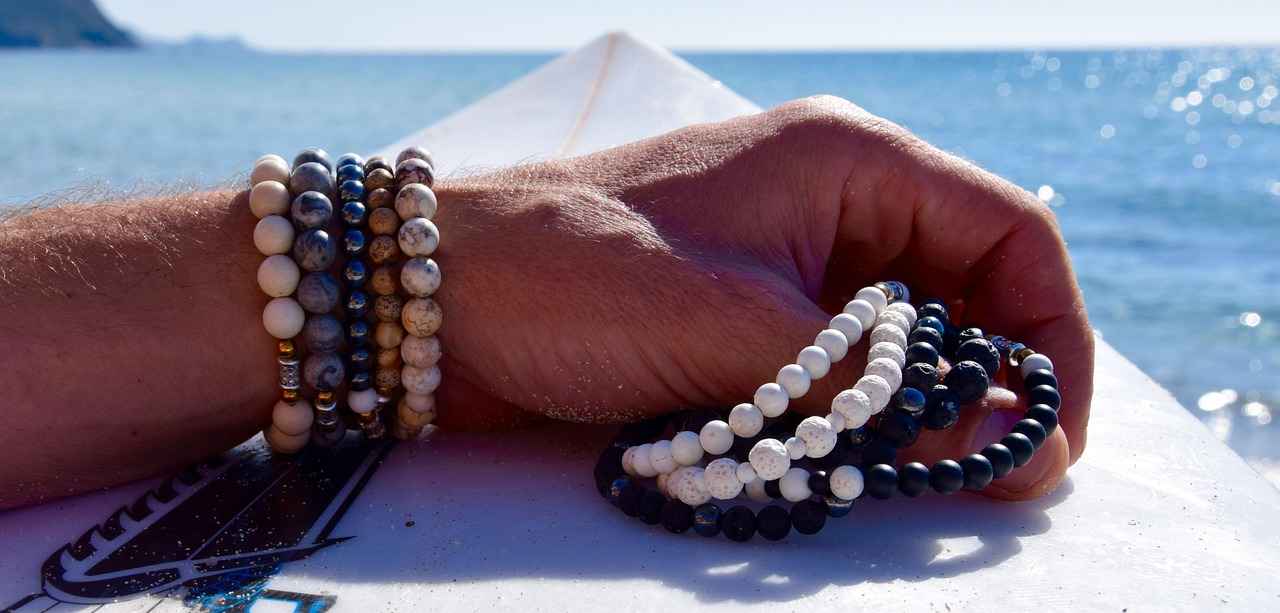
How to Incorporate Vintage Jewelry into Modern Outfits
In today’s fashion landscape, vintage jewelry has emerged as a powerful tool for self-expression and style enhancement. Integrating these unique pieces into your modern wardrobe not only showcases your individuality but also adds a touch of history and charm to your outfits. Here are some practical tips on how to seamlessly blend vintage jewelry with contemporary fashion for a chic look.
When it comes to combining vintage jewelry with modern attire, the key is to strike a balance. Consider the style and color of your vintage pieces. For instance, a bold Art Deco statement necklace can serve as a stunning focal point against a simple, modern dress. Pairing it with understated accessories helps maintain a cohesive look.
Layering is a fantastic way to incorporate vintage jewelry into your outfits. Start by wearing a vintage pendant necklace along with modern chain pieces of varying lengths. This creates depth and interest. Don’t hesitate to mix materials—pair a delicate Victorian brooch with contemporary leather or denim for an edgy twist.
Understanding when to wear vintage jewelry can enhance its appeal. For casual outings, opt for smaller pieces like vintage stud earrings or a simple bracelet. On the other hand, for formal events, donning a statement vintage ring or a pair of chandelier earrings can elevate your look. Always consider the event’s dress code while showcasing your vintage finds.
Color coordination plays a crucial role in integrating vintage jewelry with modern outfits. If your vintage piece features intricate colors, choose contemporary clothing that complements these hues. For example, a colorful vintage brooch can add flair to a neutral outfit, making it pop without overwhelming the overall look.
While it may be tempting to wear multiple vintage pieces at once, sometimes less is more. Choose one or two standout pieces and let them shine. A vintage statement ring paired with a sleek modern outfit can create a sophisticated and polished appearance. Remember, the goal is to enhance your outfit, not overshadow it.
Your personal style should always guide your choices. If you have a penchant for the bohemian look, consider integrating vintage jewelry with earthy tones and flowing fabrics. Alternatively, if you prefer a minimalist aesthetic, select vintage pieces that are subtle yet impactful. Tailoring your vintage choices to reflect your unique style will make your outfits feel authentic and well-curated.
To maintain the beauty of your vintage jewelry, proper care is essential. Regularly clean your pieces using appropriate methods—avoid harsh chemicals and opt for gentle cleaning solutions. Store them in a cool, dry place to prevent tarnishing. By ensuring your vintage jewelry remains in excellent condition, you can enjoy its charm for years to come.
In summary, incorporating vintage jewelry into your modern wardrobe is an art that combines creativity and personal expression. By following these practical tips, you can create stylish outfits that celebrate both the past and the present, making every occasion special.
Layering Vintage with Modern Pieces
Layering vintage and modern jewelry is an art that allows you to express your unique style while celebrating the charm of the past. This technique not only enhances your overall look but also highlights the distinct beauty of both vintage and contemporary pieces. In this section, we will explore effective methods to create a cohesive and stylish jewelry ensemble that seamlessly blends these two worlds.
Before diving into specific techniques, it’s essential to grasp the fundamentals of jewelry layering. The goal is to create a balanced look that showcases both vintage and modern elements without overwhelming your outfit. Here are some key tips to consider:
- Start with a Base: Begin with a foundational piece, such as a simple necklace or a classic bracelet, which can serve as the anchor for your layered look.
- Mix Textures and Materials: Combining different materials, like gold and silver or pearls and leather, can add depth and interest to your ensemble.
- Vary Lengths: Layering necklaces of varying lengths creates visual intrigue. For instance, pair a long vintage pendant with a modern choker for a striking contrast.
When selecting pieces to layer, consider the following:
- Contrast in Style: Pairing a bold, geometric modern piece with a delicate vintage item can create a stunning juxtaposition.
- Color Coordination: Ensure that the colors of your vintage and modern pieces complement each other. Neutral tones often work well together, while a pop of color can make a statement.
- Sentimental Value: Incorporate pieces that hold personal significance. This adds an emotional layer to your outfit and makes your look truly unique.
Here are some practical techniques to achieve a harmonious layered look:
- Stacking Rings: Combine vintage rings with modern designs on the same finger or across multiple fingers for a trendy stacked effect.
- Layering Bracelets: Mix a vintage charm bracelet with sleek modern bangles. This combination can create a playful yet sophisticated vibe.
- Ear Cuffs and Vintage Earrings: Pair a contemporary ear cuff with vintage earrings for a bold statement. This combination can add an edgy touch to your overall look.
To refine your layering technique, seek inspiration from various sources:
- Social Media: Platforms like Instagram and Pinterest are treasure troves for jewelry styling ideas. Follow influencers who specialize in vintage and modern fashion.
- Fashion Magazines: Many publications feature articles and photos showcasing how to layer jewelry effectively.
- Local Jewelry Boutiques: Visiting local shops can provide insights into current trends and offer unique pieces that you may not find elsewhere.
In conclusion, layering vintage with modern jewelry is a versatile way to express your personal style. By understanding the basics, choosing the right pieces, and employing effective techniques, you can create stunning looks that celebrate the beauty of both eras. Remember, the key is to have fun and let your creativity shine through!
Choosing the Right Occasion for Vintage Jewelry
Choosing the right occasion for vintage jewelry is essential for showcasing its unique charm and enhancing your overall look. Understanding when to wear these exquisite pieces can elevate your style and make a statement. Below, we explore various occasions where vintage jewelry can shine, from casual outings to formal events.
- Casual Outings: Vintage jewelry can add a touch of elegance to your everyday wear. For a casual brunch or a day out shopping, consider wearing a delicate vintage pendant or a pair of retro earrings. These pieces can effortlessly enhance your outfit without overwhelming it.
- Workplace: Incorporating vintage jewelry into your work attire can express your personal style while remaining professional. Opt for subtle brooches or classic watches that complement your outfit. Just ensure that the pieces are not too flashy for a corporate setting.
- Evening Events: Vintage jewelry truly shines at evening events. Whether attending a cocktail party or a formal gala, bold statement pieces like Art Deco necklaces or Victorian rings can serve as stunning focal points for your ensemble. Pair them with a classic dress for a timeless look.
- Weddings: Vintage jewelry is a popular choice for weddings, whether you are the bride or a guest. Brides can incorporate family heirlooms or vintage pieces that resonate with their wedding theme. Guests can opt for elegant vintage earrings or bracelets to add a touch of sophistication to their outfits.
- Special Occasions: Birthdays, anniversaries, and other special celebrations are perfect opportunities to showcase your vintage jewelry collection. Choose pieces that reflect the significance of the occasion, such as a vintage locket for sentimental value.
When selecting vintage jewelry, consider the following tips:
- Match the Style: Ensure that the style of the jewelry matches the formality of the occasion. More intricate designs suit formal events, while simpler pieces are ideal for casual outings.
- Color Coordination: Choose jewelry that complements your outfit’s color palette. Vintage pieces often feature unique colors and patterns, so select items that enhance your overall look.
- Comfort: Vintage jewelry can sometimes be heavier or more intricate than modern pieces. Ensure that the jewelry is comfortable to wear, especially for longer events.
In summary, understanding the right occasions for wearing vintage jewelry can significantly enhance its appeal. By selecting the appropriate pieces that match the event’s formality and your personal style, you can create stunning outfits that celebrate both the beauty of vintage jewelry and your unique fashion sense.
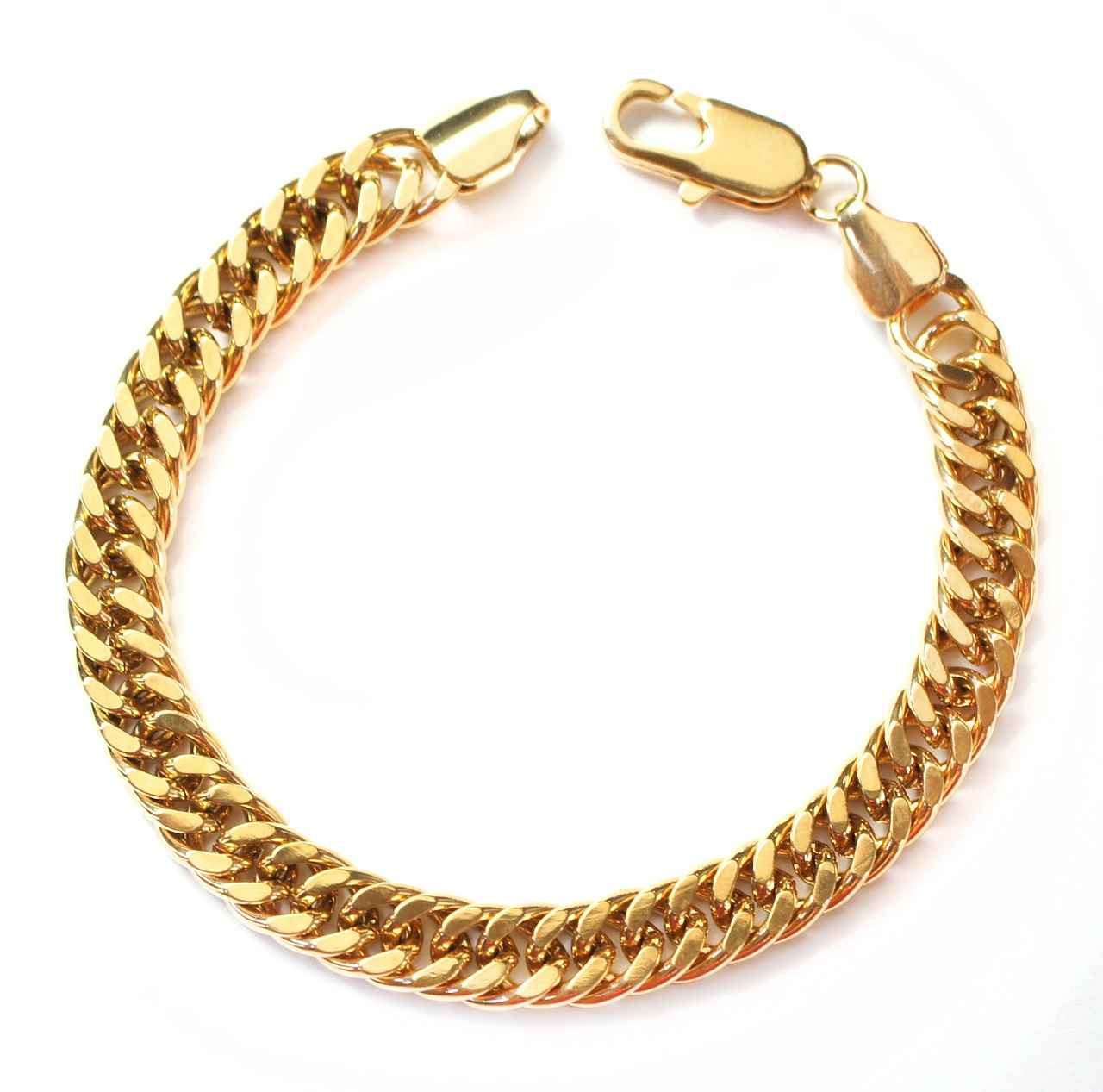
How to Care for Vintage Jewelry
Proper care is essential for preserving the beauty of vintage jewelry. With the right techniques, you can ensure your cherished pieces remain in excellent condition for years to come. This guide provides you with effective cleaning and storage tips to help maintain the integrity of your vintage treasures.
Vintage jewelry is often crafted from delicate materials and intricate designs that require special attention. Over time, exposure to elements such as air, moisture, and chemicals can lead to tarnishing, discoloration, and even damage. By implementing proper care methods, you can protect your jewelry’s value and aesthetic appeal.
Cleaning vintage jewelry safely is crucial to avoid causing harm. Here are some effective methods:
- Gentle Soap and Water: Use a mild soap mixed with warm water. Soak a soft cloth in the solution and gently wipe your jewelry. Avoid submerging pieces that contain pearls or other porous materials.
- Specialized Jewelry Cleaners: Invest in cleaners specifically designed for vintage jewelry. Always read the instructions and test on a small area first.
- Soft Brushes: A soft-bristled toothbrush can help clean intricate designs. Be gentle to avoid scratching the surface.
To preserve the integrity of your pieces, avoid:
- Harsh chemicals or abrasive materials that can scratch or damage the finish.
- Ultrasonic cleaners, which can loosen stones or damage delicate settings.
- Excessive scrubbing, which can wear down the metal and finish.
Proper storage is just as important as cleaning. Here are some tips to keep your vintage jewelry safe:
- Individual Pouches or Boxes: Store each piece separately in soft pouches or acid-free boxes to prevent scratching and tangling.
- Climate Control: Keep your jewelry in a cool, dry place away from direct sunlight to prevent fading and deterioration.
- Anti-Tarnish Solutions: Use anti-tarnish strips or bags to help prevent tarnishing, especially for silver pieces.
Regular maintenance is key. Clean your vintage jewelry after wearing it, especially if it has come into contact with skin oils or perfumes. Store pieces in their designated places to keep them organized and protected from potential damage.
Beyond cleaning and storage, consider these additional tips:
- Regular Inspections: Periodically check your jewelry for loose stones or signs of wear. Early detection can prevent costly repairs.
- Avoid Wearing During Activities: Remove jewelry before engaging in activities that may expose it to harsh conditions, such as swimming or exercising.
- Professional Cleaning: For intricate pieces or significant tarnishing, consider seeking professional cleaning services that specialize in vintage jewelry.
By following these care tips, you can ensure that your vintage jewelry remains a stunning part of your collection for many years to come. Cherish the history and craftsmanship of each piece while taking the necessary steps to protect their beauty.
Cleaning Vintage Jewelry Safely
Cleaning vintage jewelry requires a unique approach to ensure that these cherished pieces retain their beauty and integrity. With their delicate materials and intricate designs, vintage jewelry can easily be damaged if not handled properly. Understanding the right cleaning methods and products is essential for preserving the charm of these timeless treasures.
Vintage jewelry often features delicate materials such as pearls, opals, and intricate metalwork that can be easily damaged by harsh chemicals or abrasive cleaning methods. Regular cleaning helps to remove dirt and oils that accumulate over time, but it must be done with care. Using the wrong technique can lead to tarnishing, scratching, or even breakage.
- Gentle Soap and Water: For most pieces, a mild soap mixed with warm water is an effective cleaning solution. Use a soft cloth or a soft-bristled toothbrush to gently scrub the jewelry, focusing on crevices where dirt may accumulate.
- Ultrasonic Cleaners: While these devices can be effective, they should be used with caution. Some vintage pieces, particularly those with glued stones or delicate settings, may not withstand ultrasonic cleaning.
- Professional Cleaning: For valuable or particularly fragile items, consider seeking out a professional jeweler who specializes in vintage pieces. They have the expertise to clean and restore jewelry without causing damage.
When cleaning vintage jewelry, it’s crucial to avoid certain products that can cause harm:
- Harsh Chemicals: Avoid bleach, ammonia, or any abrasive cleaners that can erode the materials.
- Polishing Cloths: While they may be suitable for modern jewelry, they can scratch or dull the finish of vintage pieces.
- Steam Cleaners: Although effective for some jewelry, steam can loosen stones in older settings.
After cleaning, it’s essential to properly maintain your vintage jewelry to keep it looking its best:
- Storage: Store your pieces in a cool, dry place, ideally in a fabric-lined jewelry box or pouches to prevent scratches.
- Regular Inspections: Periodically check for loose stones or signs of wear. Address any issues promptly to prevent further damage.
- Avoiding Exposure: Keep your vintage jewelry away from harsh chemicals, perfumes, and lotions, which can affect their appearance.
Proper care not only extends the life of your vintage jewelry but also maintains its value. Well-preserved pieces can appreciate over time, making them not just beautiful accessories but also wise investments. Additionally, taking the time to care for these items can enhance their sentimental value, allowing you to enjoy them for generations to come.
In conclusion, cleaning vintage jewelry safely is an art that requires knowledge and attention to detail. By following the recommended cleaning methods and avoiding harmful products, you can ensure that your vintage pieces remain as stunning as the day they were crafted. Remember, the goal is to preserve the history and beauty of these unique treasures, allowing them to continue telling their stories for years to come.
Storage Solutions for Vintage Jewelry
When it comes to preserving the beauty and integrity of your vintage jewelry, proper storage is crucial. These pieces often carry significant sentimental value and historical charm, making it essential to protect them from tarnishing and damage. In this section, we will explore effective storage solutions that will keep your jewelry organized and safeguarded from various environmental factors.
Vintage jewelry, often made from delicate materials, can be susceptible to tarnishing, scratches, and other forms of damage if not stored correctly. Factors such as humidity, light exposure, and temperature fluctuations can all contribute to the deterioration of these cherished items. By implementing appropriate storage methods, you can extend the lifespan of your jewelry and maintain its luster.
- Use Anti-Tarnish Pouches: These specially designed pouches are lined with materials that absorb moisture and prevent tarnishing. Storing your jewelry in these pouches can significantly reduce the risk of oxidation.
- Invest in a Jewelry Box with Dividers: A dedicated jewelry box with compartments allows you to organize your pieces without them rubbing against each other, which can cause scratches. Look for boxes lined with soft fabric to provide additional protection.
- Store in a Climate-Controlled Environment: Keeping your jewelry in a cool, dry place away from direct sunlight is essential. Avoid areas like bathrooms or attics where humidity levels can fluctuate significantly.
- Use Acid-Free Tissue Paper: Wrapping individual pieces in acid-free tissue paper can help prevent scratches and tarnishing. This method is especially useful for fragile items.
- Consider Display Cases: If you want to showcase your vintage jewelry, opt for display cases that provide a protective barrier against dust and environmental factors. Ensure these cases are kept away from direct sunlight.
Organizing your vintage jewelry collection not only makes it easier to find your favorite pieces but also helps in maintaining their condition. Here are some practical tips:
- Sort by Style or Era: Grouping your jewelry by style or era can make it easier to locate specific pieces while also providing a visually appealing display.
- Label Storage Areas: If you have multiple boxes or compartments, consider labeling them. This will save you time and prevent unnecessary handling of your jewelry.
- Regularly Inspect Your Collection: Periodically check your jewelry for signs of wear or damage. Early detection can help you address issues before they become significant problems.
To ensure the longevity of your vintage jewelry, it is equally important to know what practices to avoid:
- Avoid Storing in Plastic Bags: Plastic can trap moisture, leading to tarnishing. Opt for breathable materials instead.
- Don’t Overcrowd Storage Spaces: Overstuffing your jewelry box can lead to scratches and tangling. Give each piece enough space to breathe.
- Keep Away from Perfumes and Lotions: Chemicals from beauty products can damage jewelry. Always apply these products before putting on your jewelry.
By implementing these storage solutions and organization tips, you can ensure that your vintage jewelry remains as stunning as the day you acquired it. Proper care will not only preserve the beauty of your pieces but also enhance their value over time.

Where to Find Authentic Vintage Jewelry
Finding authentic vintage jewelry can be a rewarding experience for collectors and fashion enthusiasts alike. The thrill of uncovering unique pieces with history and character is unmatched. In this guide, we will explore the best places to search for vintage jewelry, including online marketplaces, estate sales, and antique shops, ensuring you have all the insights needed to secure those coveted treasures.
Online marketplaces have revolutionized the way we shop for vintage jewelry. Platforms like Etsy and eBay offer extensive selections from various sellers, making it easier to find unique pieces that resonate with your personal style. Here are some tips to enhance your online shopping experience:
- Research Sellers: Always check the seller’s ratings and reviews before making a purchase. Look for sellers with a history of positive feedback.
- Ask Questions: Don’t hesitate to contact sellers for more information about the jewelry’s authenticity and condition.
- Look for Return Policies: Ensure that the platform has a return policy in case the piece doesn’t meet your expectations.
Estate sales can be a goldmine for vintage jewelry enthusiasts. These sales often feature personal collections that include one-of-a-kind pieces. Here’s how to make the most of your estate sale experience:
- Arrive Early: Getting to the sale early can give you the best chance to find desirable items before they’re picked over.
- Inspect Carefully: Always examine jewelry closely for signs of wear or damage, and verify authenticity if possible.
- Negotiate: Many estate sales are flexible on pricing, so don’t be afraid to negotiate for a better deal.
Antique shops often carry curated collections of vintage jewelry, providing an opportunity to find high-quality pieces. When visiting antique shops, consider the following:
- Build Relationships: Establishing a rapport with shop owners can lead to insider tips on new arrivals or upcoming sales.
- Ask About Provenance: Inquire about the history of the pieces; knowing the story behind a piece can enhance its value and significance.
- Check for Certification: Look for certificates of authenticity, especially for high-value items.
Flea markets can be a fun and adventurous way to hunt for vintage jewelry. Here, you can often negotiate prices and discover unexpected finds. To optimize your flea market experience:
- Be Open-Minded: You might not find what you’re looking for right away, but being open to different styles can lead to delightful surprises.
- Bring Cash: Many vendors prefer cash transactions, which can also help you negotiate better deals.
- Visit Regularly: Flea markets change frequently, so regular visits can help you spot new items as they arrive.
Social media platforms, especially Instagram and Facebook, have become popular venues for buying and selling vintage jewelry. Many groups and pages are dedicated to vintage jewelry enthusiasts. Here’s how to navigate these platforms:
- Follow Reputable Accounts: Look for sellers and influencers known for their authenticity and quality.
- Join Groups: Participating in vintage jewelry groups can provide access to exclusive sales and auctions.
- Engage with the Community: Building connections can lead to valuable insights and opportunities to purchase rare pieces.
In conclusion, whether you prefer the convenience of online shopping, the thrill of estate sales, or the curated offerings of antique shops, there are countless avenues to explore in your search for authentic vintage jewelry. Each option provides unique experiences and opportunities to discover pieces that resonate with your style and history.
Online Marketplaces for Vintage Jewelry
have revolutionized the way we shop for unique and timeless pieces. With platforms like Etsy and eBay, vintage jewelry enthusiasts can access a vast selection of authentic items from the comfort of their homes. But how can you navigate these sites effectively to find the best pieces at reasonable prices?
Online marketplaces offer a plethora of advantages for vintage jewelry shoppers. Firstly, they provide access to a global market, allowing you to discover pieces that may not be available locally. Additionally, the ability to compare prices and styles across different sellers can lead to better deals and informed purchasing decisions.
Etsy is renowned for its handmade and vintage items. When searching for vintage jewelry, use specific keywords related to the style or era you’re interested in. For instance, try searching for “Art Deco earrings” or “Victorian brooches”. This targeted approach can yield better results.
- Check Seller Ratings: Always review seller ratings and customer feedback to ensure you’re purchasing from a reputable source.
- Ask Questions: Don’t hesitate to contact sellers with questions about the item’s authenticity or condition.
- Look for Detailed Descriptions: Authentic vintage pieces should come with detailed descriptions, including materials used and any history behind the item.
eBay is another excellent platform for discovering vintage jewelry. However, it requires a slightly different approach due to its auction-style listings.
- Set Alerts: Use eBay’s alert feature to notify you when new listings match your search criteria.
- Research Completed Listings: Check completed listings to understand the market value of specific pieces, which can help you bid wisely.
- Understand Return Policies: Familiarize yourself with the seller’s return policy before making a purchase, as this can vary widely.
When shopping online, ensuring the authenticity of vintage jewelry is crucial. Look for sellers who provide certificates of authenticity or detailed provenance. Additionally, consider joining online communities or forums dedicated to vintage jewelry, where you can seek advice and recommendations from fellow enthusiasts.
Negotiating prices can be a valuable skill when buying vintage jewelry online. On platforms like eBay, consider making a reasonable offer if the item is listed as “Buy It Now.” For Etsy, some sellers may be open to negotiations, especially if you’re interested in purchasing multiple items.
Shopping for vintage jewelry online can be an exciting and rewarding experience. By utilizing platforms like Etsy and eBay, and applying the tips outlined above, you can discover unique pieces that not only enhance your style but also serve as a testament to the rich history behind each item. Remember to take your time, do your research, and enjoy the hunt for that perfect vintage treasure!
Tips for Buying Vintage Jewelry at Estate Sales
When it comes to acquiring vintage jewelry, estate sales can be an exciting and rewarding experience. These sales often feature unique pieces that carry stories and histories, making them particularly appealing to collectors and enthusiasts alike. However, navigating estate sales requires some strategy and knowledge. Here are some valuable tips for buying vintage jewelry at estate sales.
Before heading to an estate sale, it’s crucial to do your homework. Research the sale through online listings or social media. Many estate sales provide photographs of items for sale, giving you a preview of what to expect. Look for any vintage jewelry pieces that catch your eye, and take note of their estimated values. This preparation will help you identify potential treasures and set a budget.
Timing can significantly impact your estate sale experience. Arriving early allows you to be among the first to browse the items available. This is particularly important for vintage jewelry, as desirable pieces can be snatched up quickly. Consider joining a mailing list or following the estate sale company on social media to get updates on upcoming sales.
Familiarizing yourself with key vintage jewelry styles, such as Art Deco, Victorian, or Mid-Century Modern, is essential. Each style has distinct characteristics that can help you identify authentic pieces. Additionally, understanding the materials used, like gold, silver, or semi-precious stones, can help you evaluate the quality and value of the jewelry you encounter.
When you find a piece that interests you, take the time to inspect it closely. Look for signs of wear, damage, or repairs. Check for hallmarks or stamps that indicate the maker or material quality. If possible, bring a magnifying glass to examine intricate details. Remember, the condition of the jewelry plays a significant role in its value.
Don’t hesitate to ask the estate sale staff questions about the jewelry. Inquire about its history, provenance, and any known repairs. The more information you gather, the better equipped you will be to make an informed decision. Additionally, if the seller is knowledgeable about the items, it can enhance your understanding of their value.
Negotiation is a common practice at estate sales, so be prepared to discuss prices. If you believe a piece is priced too high based on your research, politely express your thoughts and make a reasonable counteroffer. Sellers often appreciate informed buyers and may be willing to negotiate, especially if the sale is nearing its end.
If you find multiple pieces you love, consider asking about a bundle deal. Sellers may be more inclined to offer a discount if you are purchasing several items at once. This strategy not only saves you money but also allows you to expand your vintage jewelry collection.
Finally, trust your instincts when purchasing vintage jewelry. If a piece speaks to you or feels like a perfect addition to your collection, go for it! Vintage jewelry is not just about investment value; it’s also about personal connection and enjoyment.
By following these tips, you can enhance your estate sale shopping experience and uncover stunning vintage jewelry treasures. Happy hunting!

The Environmental Impact of Choosing Vintage Jewelry
Opting for vintage jewelry is not merely a fashion statement; it embodies a deeper commitment to the environment. As consumers become increasingly aware of the ecological footprint of their choices, vintage jewelry stands out as a sustainable alternative. This article explores how choosing vintage pieces not only reduces waste but also promotes responsible fashion practices.
When you purchase vintage jewelry, you are effectively extending the lifecycle of existing pieces, thereby minimizing the demand for new production. Each vintage item is a testament to craftsmanship and history, and by choosing these pieces, you help divert waste from landfills. The jewelry industry is notorious for its environmental impact, particularly through mining and manufacturing processes. By opting for vintage, you are not only saving a unique piece but also contributing to a more sustainable future.
- Reducing Mining Impact: Mining for precious metals and gemstones often leads to significant ecological disruption. By choosing vintage jewelry, you help decrease the demand for newly mined resources.
- Lower Carbon Footprint: The production and transportation of new jewelry involve substantial energy consumption. Vintage pieces, however, have already traversed this path, thus reducing the overall carbon footprint associated with jewelry consumption.
- Promoting Circular Fashion: Vintage jewelry is a prime example of circular fashion, where products are reused and recycled rather than discarded. This model fosters a more sustainable approach to consumerism.
Purchasing vintage jewelry often means supporting local artisans and small businesses. Many vintage shops and estate sales are run by individuals who have a passion for preserving history and craftsmanship. By buying from these sources, you contribute to the local economy, helping to sustain small businesses and promote community growth. This not only fosters a sense of connection to your purchases but also encourages the continuation of traditional crafting techniques.
While all vintage jewelry is a sustainable choice, certain styles have gained popularity for their unique charm and enduring appeal. For instance, Art Deco pieces are celebrated for their geometric designs and luxurious materials, while Victorian jewelry is known for its intricate symbolism and craftsmanship. Each piece tells a story, making it not just an accessory but a conversation starter.
To fully embrace the sustainability of vintage jewelry, proper care is essential. Here are some tips to maintain your cherished pieces:
1. Clean gently with a soft cloth to avoid scratching.2. Store in a cool, dry place to prevent tarnishing.3. Avoid exposing vintage jewelry to harsh chemicals.
By taking these steps, you ensure that your vintage jewelry remains beautiful and wearable for generations to come, further enhancing its sustainable value.
In conclusion, the choice to invest in vintage jewelry is a powerful statement about one’s commitment to sustainability and environmental consciousness. By reducing waste, supporting local economies, and preserving unique pieces of history, vintage jewelry serves as a stylish yet responsible choice for the modern consumer.
Reducing Demand for New Resources
In today’s world, where sustainability is becoming increasingly important, the choice of jewelry can significantly impact the environment. Reducing demand for newly mined resources is one of the most compelling reasons to consider vintage jewelry. This section delves into the environmental benefits of supporting vintage markets over new production, illustrating how this choice contributes to a more sustainable future.
When you opt for vintage jewelry, you are not just selecting a unique piece with a rich history; you are also making a conscious decision to minimize environmental harm. The mining of precious metals and gemstones is an energy-intensive process that often results in significant ecological damage. By choosing vintage, you help reduce the demand for these newly mined materials, which in turn lessens the harmful effects associated with mining.
- Less Waste: Vintage jewelry is repurposed and reused, which helps decrease the amount of waste generated by the jewelry industry.
- Energy Conservation: The energy used in mining and processing new materials is substantial. Vintage jewelry bypasses this need, conserving energy resources.
- Preservation of Natural Habitats: Mining operations often lead to deforestation and habitat destruction. By choosing vintage, you support the preservation of these natural environments.
By purchasing vintage jewelry, you are actively participating in a sustainable fashion movement. This movement encourages consumers to think critically about their purchases and the impact they have on the planet. Vintage pieces often boast timeless designs that transcend trends, allowing you to invest in jewelry that remains stylish for years to come.
In addition to the environmental benefits, buying vintage jewelry often means supporting local artisans and small businesses. When you purchase from local shops or estate sales, you contribute to the local economy and promote craftsmanship that may otherwise be overlooked. This choice fosters a sense of community while encouraging the appreciation of skilled artisans who create unique, handmade pieces.
Finding authentic vintage jewelry can be a thrilling adventure. Look for reputable dealers, attend estate sales, and explore antique shops. Always check for authenticity and quality to ensure you are making a sustainable choice. Websites like Etsy and eBay also offer a plethora of vintage options, but be sure to read reviews and seller ratings to guarantee a positive purchasing experience.
Choosing vintage jewelry is more than just a fashion statement; it is a conscious choice that reflects your values regarding sustainability and environmental responsibility. By reducing the demand for newly mined resources, you are playing a part in the larger movement toward ethical consumerism. Embrace the charm of vintage pieces while contributing to a healthier planet.
Supporting Local Artisans and Small Businesses
When you choose to purchase vintage jewelry, you’re not just acquiring a unique piece of art; you’re also making a significant impact on your local economy. This choice supports local artisans and small businesses, fostering a community of craftsmanship that thrives on creativity and tradition.
Supporting local artisans means investing in the skills and talents of individuals who pour their heart and soul into their craft. These artisans often create one-of-a-kind pieces that tell a story, offering a personal touch that mass-produced jewelry simply cannot match. By purchasing vintage jewelry, you are not only acquiring a unique accessory but also helping to preserve the art of craftsmanship in your community.
- Job Creation: Local artisans and small businesses often employ other community members, creating jobs and stimulating the local economy.
- Community Growth: When you support local businesses, you help foster a vibrant community that values creativity and sustainability.
- Investment in Local Culture: Vintage jewelry often reflects the history and culture of the area, helping to preserve local heritage.
Every time you buy vintage jewelry, you contribute to a cycle of sustainability and economic growth. Local artisans are often more eco-conscious, using recycled materials and sustainable practices that reduce environmental impact. This means your purchase not only supports their livelihood but also promotes a healthier planet.
Finding authentic vintage jewelry crafted by local artisans can be an adventure in itself. Here are some practical tips:
1. Visit local craft fairs and artisan markets.2. Explore antique shops and vintage boutiques in your area.3. Check online platforms that focus on handmade and vintage items, such as Etsy.4. Join local social media groups dedicated to vintage finds.
Engaging with local artisans goes beyond just a transaction. It’s about building relationships. Many artisans love to share their stories and the inspiration behind their creations. By connecting with them, you not only gain insight into the craftsmanship but also become part of a community that values support and collaboration.
Your choice to purchase vintage jewelry is a powerful statement. It promotes the idea that craftsmanship and individuality matter. By wearing pieces that have a story, you advocate for a more personalized approach to fashion that values quality over quantity. This shift in consumer behavior encourages artisans to continue their work and inspires new generations to appreciate handmade art.
In summary, supporting local artisans and small businesses through the purchase of vintage jewelry not only enriches your personal style but also strengthens the community and promotes sustainable practices. By making informed choices, you become part of a larger movement that values craftsmanship and creativity.
Frequently Asked Questions
- Why should I choose vintage jewelry over new pieces?
Choosing vintage jewelry not only adds a unique flair to your collection but also supports sustainability. By opting for vintage, you’re reducing the demand for newly mined materials, which is a win for the planet!
- How can I tell if a vintage piece is authentic?
Look for signs of craftsmanship, such as intricate detailing and quality materials. Researching the specific era’s characteristics can also help you identify genuine vintage pieces. Don’t hesitate to ask for documentation or provenance!
- What are the best ways to care for my vintage jewelry?
To keep your vintage treasures shining, gently clean them with a soft cloth and store them in a cool, dry place. Avoid harsh chemicals and consider using specialized jewelry cleaners designed for delicate pieces.
- Can I wear vintage jewelry every day?
Absolutely! Vintage jewelry can elevate your daily outfits. Just be mindful of the piece’s fragility and avoid wearing it during activities that may cause damage.
- Where can I find authentic vintage jewelry?
Check out local antique shops, estate sales, and reputable online marketplaces like Etsy and eBay. Always do your research and read seller reviews to ensure authenticity!

